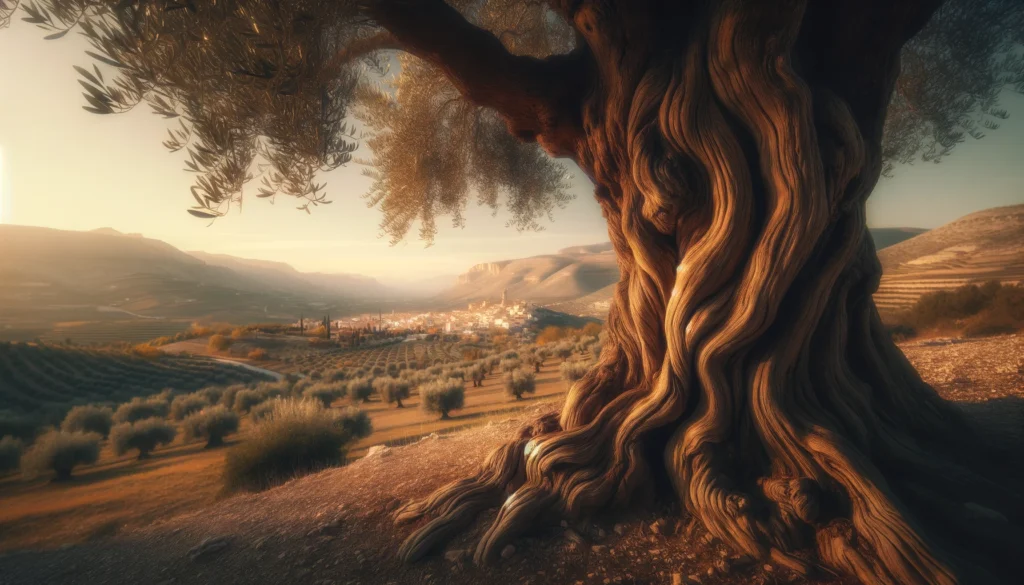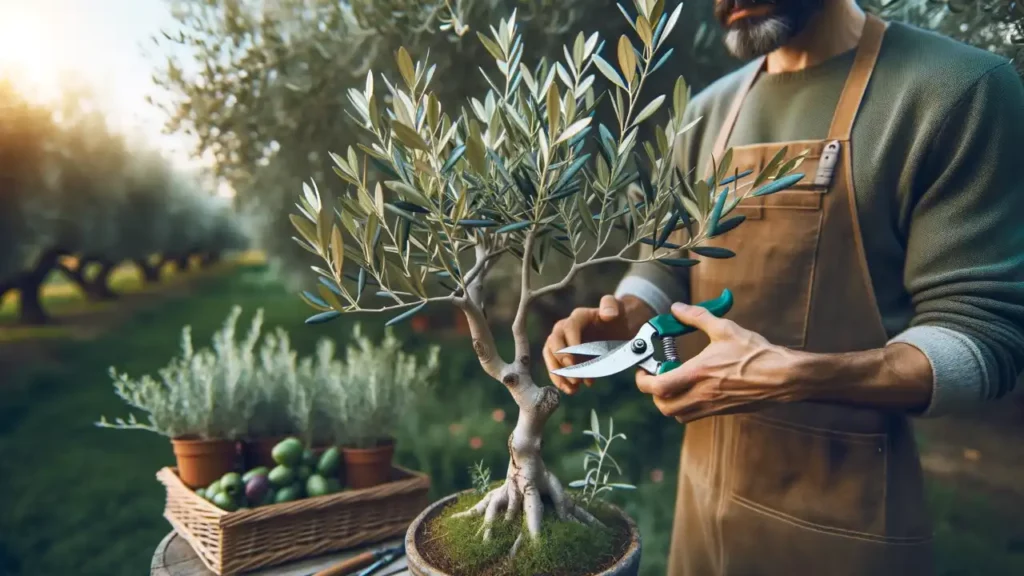Explore the enchanting world of ancient olive trees with our comprehensive guide. Discover their history, care, and unique beauty in this article. Perfect for garden enthusiasts and history buffs alike. Contact us to learn more about these timeless treasures!
Key Takeaways:
- Historical Significance: Explore the rich history and cultural importance of old olive trees.
- Aesthetic and Environmental Benefits: Understand how these ancient trees enhance landscapes and contribute to the environment.
- Care and Maintenance: Insights into the best practices for maintaining the health and beauty of old olive trees.
- Versatility in Landscaping: Ideas for incorporating old olive trees into various landscape designs.
Old olive trees, with their gnarled trunks and sprawling branches, stand as living testaments to history and natural beauty. These ancient giants, often centuries-old, are not just plants but symbols of endurance, resilience, and a connection to the past. Found across the Mediterranean and increasingly popular worldwide, old olive trees offer a unique blend of aesthetic appeal and cultural significance.
The Historical and Cultural Significance of Old Olive Trees
Olive trees have been integral to Mediterranean cultures for thousands of years. The oldest olive trees in the world are believed to be over 2,000 years old, with some estimates even suggesting ages beyond 3,000 years. These trees have witnessed the rise and fall of empires, survived wars, and endured environmental changes, making them a symbol of resilience and continuity.
In regions like Southern Spain, olive trees have been cultivated for centuries, shaping the landscape and local economies. The article “The Rich History of Olive Trees in Southern Spain: Tracing the Journey of Olive Cultivation Through the Ages” delves deeper into this fascinating history, exploring how these trees have been an integral part of the region’s identity.
Aesthetic and Environmental Impact of Old Olive Trees
The aesthetic appeal of old olive trees is undeniable. With their twisted trunks and silvery leaves, they add a unique character to any landscape. This distinct look makes them popular choices for gardens, public spaces, and even as focal points in creative landscaping projects.
Environmentally, olive trees are beneficial too. They are hardy and drought-resistant, making them suitable for various climates. Their longevity and adaptability mean they can continue to provide ecological benefits for many years.

The Art of Maintaining Old Olive Trees
Maintaining old olive trees requires specific knowledge and techniques. Proper pruning, for instance, is crucial for the health and growth of these trees. The post “The Art of Pruning Olive Trees: Best Practices and Techniques for Healthy Growth” provides valuable insights into this essential aspect of olive tree care.
Versatility in Modern Landscaping
Old olive trees are not just relics of the past; they are incredibly versatile in modern landscaping. Their rugged, twisted forms provide a stark contrast to contemporary design elements, making them ideal for both traditional and modern garden settings. From acting as standalone features to being part of a Mediterranean-themed garden, these trees can adapt to various styles and preferences.
Table: Types of Old Olive Trees and Their Characteristics
| Type of Olive Tree | Characteristics | Ideal Growing Conditions |
|---|---|---|
| Ancient Olive | Extremely gnarled trunks, wide canopy | Well-drained soil, full sun |
| Centennial Olive | Robust trunk, dense foliage | Mild winters, moderate watering |
| Wild Olive | Smaller size, more rustic appearance | Rocky or sandy soil, drought-resistant |
These varieties each bring a unique element to the landscape. For instance, the Ancient Olive, with its wide canopy, offers ample shade and a majestic presence. In contrast, the more compact Wild Olive is perfect for smaller gardens or as part of a larger ensemble of trees and shrubs.
Environmental Benefits and Planting Best Practices
Old olive trees contribute significantly to the environment. They provide habitats for various bird species and insects, and their deep root systems help stabilize the soil, preventing erosion. Additionally, being drought-resistant, they are excellent choices for sustainable landscaping.
When it comes to planting old olive trees, it’s essential to consider their long-term growth and space requirements. The post “The Benefits of Using Raised Beds for Tree Planting” offers insights into effective planting techniques that ensure the health and longevity of these trees.
The Value of Old Olive Trees: Beyond Beauty

Economic and Personal Significance
Old olive trees are not only a feast for the eyes but also hold significant economic and personal value. In terms of olive production, older trees often yield high-quality olives, prized for making premium olive oil. This aspect is explored in-depth in the article “Date Palms in Spain: A Comprehensive Guide,” which sheds light on the agricultural importance of these trees.
For homeowners and garden enthusiasts, owning an old olive tree can be a source of pride and a connection to history. Their presence in a garden elevates the landscape’s aesthetic and cultural value.
Global Distribution and Age of Ancient Olive Trees: A Visualization Offer
This horizontal bar chart below presents the estimated ages of some of the oldest olive trees in various regions of Spain. The chart highlights the “Farga de l’Arión” in Catalonia, estimated to be around 1,700 years old, as well as other ancient olive trees in regions like Andalusia, Valencia, and the Balearic Islands. This visualization showcases the deep-rooted history and significance of olive cultivation across different Spanish regions, emphasizing the cultural and historical importance of these ancient trees within Spain.

FAQs about ancient olive trees:
- What Makes Olive Trees “Ancient”?
- Answer: Olive trees are considered “ancient” when they are several hundred to thousands of years old. These trees are characterized by their gnarled trunks and expansive canopies, and they often outlive many generations of humans, making them significant both historically and culturally.
- Where Can Ancient Olive Trees Be Found?
- Answer: Ancient olive trees are predominantly found in the Mediterranean region, with some of the oldest specimens in countries like Greece, Italy, Spain, and Lebanon. These trees thrive in the region’s climate and have been an integral part of its landscape and culture for millennia.
- Are Ancient Olive Trees Still Productive?
- Answer: Yes, many ancient olive trees still produce olives, although the yield may vary. Older trees often produce less fruit, but the olives they do produce are highly valued for their quality, particularly for olive oil production.
- How Are Ancient Olive Trees Cared For?
- Answer: Caring for ancient olive trees involves regular pruning to maintain their health and structure, adequate watering while ensuring good drainage, and protection from pests and diseases. Due to their age, these trees often require more attentive and specialized care to preserve their health and historical value.
- Can Ancient Olive Trees Be Transplanted?
- Answer: Transplanting ancient olive trees is possible but requires significant expertise and care. The process involves preparing the tree months in advance, ensuring the root ball is intact, and transporting the tree carefully to its new location. Post-transplant care is crucial for the tree’s survival and adaptation to its new environment.
Conclusion: the Legacy of Ancient Olive Trees
In conclusion, ancient olive trees are more than just plants; they are living symbols of history, resilience, and natural beauty. Their presence in our landscapes connects us to past civilizations and offers a unique blend of aesthetic appeal and cultural significance. Whether you’re a homeowner looking to add a touch of timeless beauty to your garden, a historian intrigued by their storied past, or an agricultural enthusiast interested in olive cultivation, these ancient trees have something to offer everyone.
We encourage anyone fascinated by these magnificent trees or considering adding one to their landscape to reach out. Our team of experts is well-versed in the history, care, and preservation of ancient olive trees and can provide tailored advice and support for your specific needs.
Interested in learning more about ancient olive trees or seeking advice on integrating them into your landscape? Contact us today! Our team at “I WANT A TREE” is eager to share our passion and knowledge about these extraordinary trees and help you bring a piece of history into your life.




